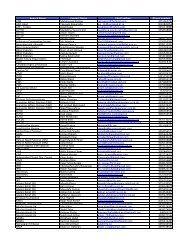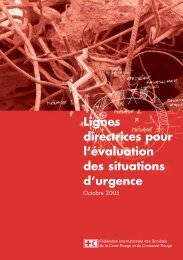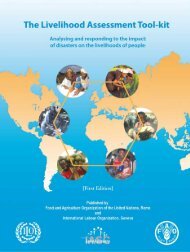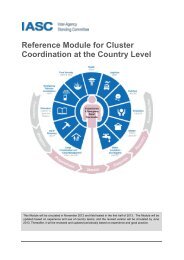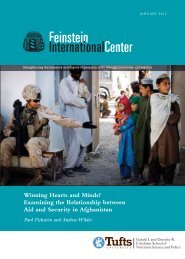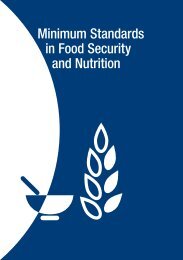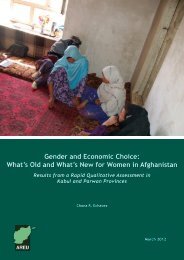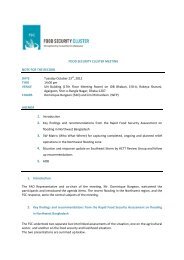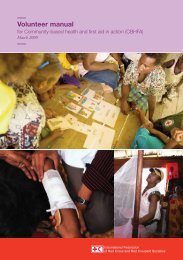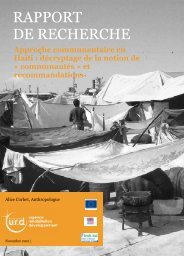4.15 MB - Food Security Clusters
4.15 MB - Food Security Clusters
4.15 MB - Food Security Clusters
- No tags were found...
You also want an ePaper? Increase the reach of your titles
YUMPU automatically turns print PDFs into web optimized ePapers that Google loves.
South Sudan: How a new country can feed its peopleA measure of food insecurityWhen households are forced tocompromises their foodconsumption, they can eitherreduce the quantity or the quality of the foodthey consumption.Figure 1.2 shows both food diversity and foodcalorie intake by state and reveals that dietarydiversity and calorie intake do not necessarilygo hand in hand (The reasons for this arefurther explored in Chapter 4), but takentogether indicate which states are consumingthe worst diets and are measures of foodinsecurity. Using these two outcomemeasures of food security, the total numberof food insecure people is approximately 60%i.e., people who consume fewer than 2100kcals per day 3 and/or survive on food itemsfrom fewer than four different food groups.People that meet both thresholds areclassified as food secure while those who areunable to meet either are classified asseverely food insecure (21%). Results by stateare presented in Figure 1.2 and Table 1.4.Warrap, Lakes and Northern Bahr al Ghazalhave the highest incidence of severe foodinsecurity. The three Equatoria states aregenerally slightly better.Figure 1.1 – Calorie intake and food diversitySource: based on calculation from NBHS 2009 dataTable 1.4 – <strong>Food</strong> insecurity<strong>Food</strong>secure<strong>Food</strong>insecureSeverelyfoodinsecureSouth Sudan 40 39 21Upper Nile 18 50 33Jonglei 19 39 41Unity 10 46 44Warrap 7 26 66Northern Bahr El Ghazal 14 36 50Western Bahr El Ghazal 13 47 41Lakes 12 35 53Western Equatoria 48 35 17Central Equatoria 33 38 29Eastern Equatoria 36 40 24Sources: NBHS, 2009Figure 1.2 – <strong>Food</strong> security outcomes by state3 Note that this threshold is different from the 1717 kcalused by FAO. The FAO cut-off cannot be applied athousehold level. 2100 kcal refers to the mean energyrequirement for light physical activity.Source: based on calculation from NBHS 2009 data6



